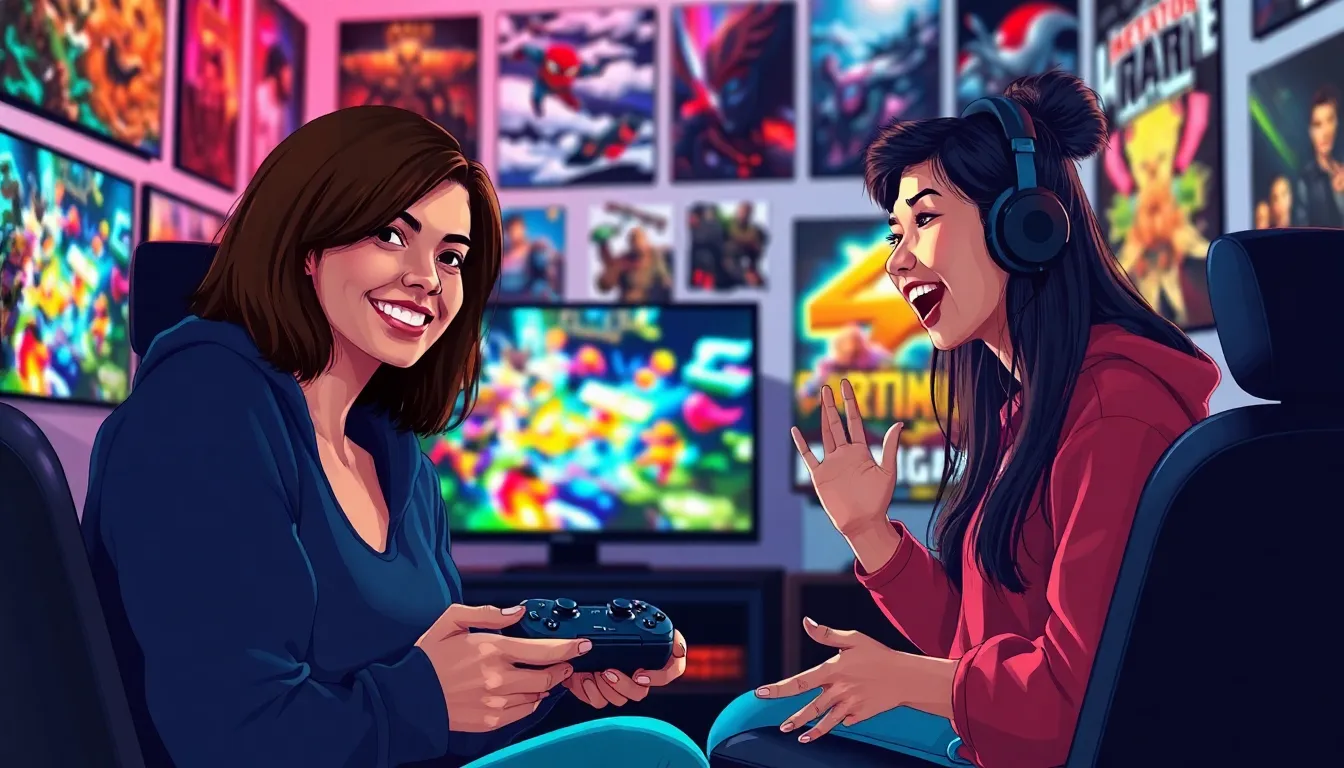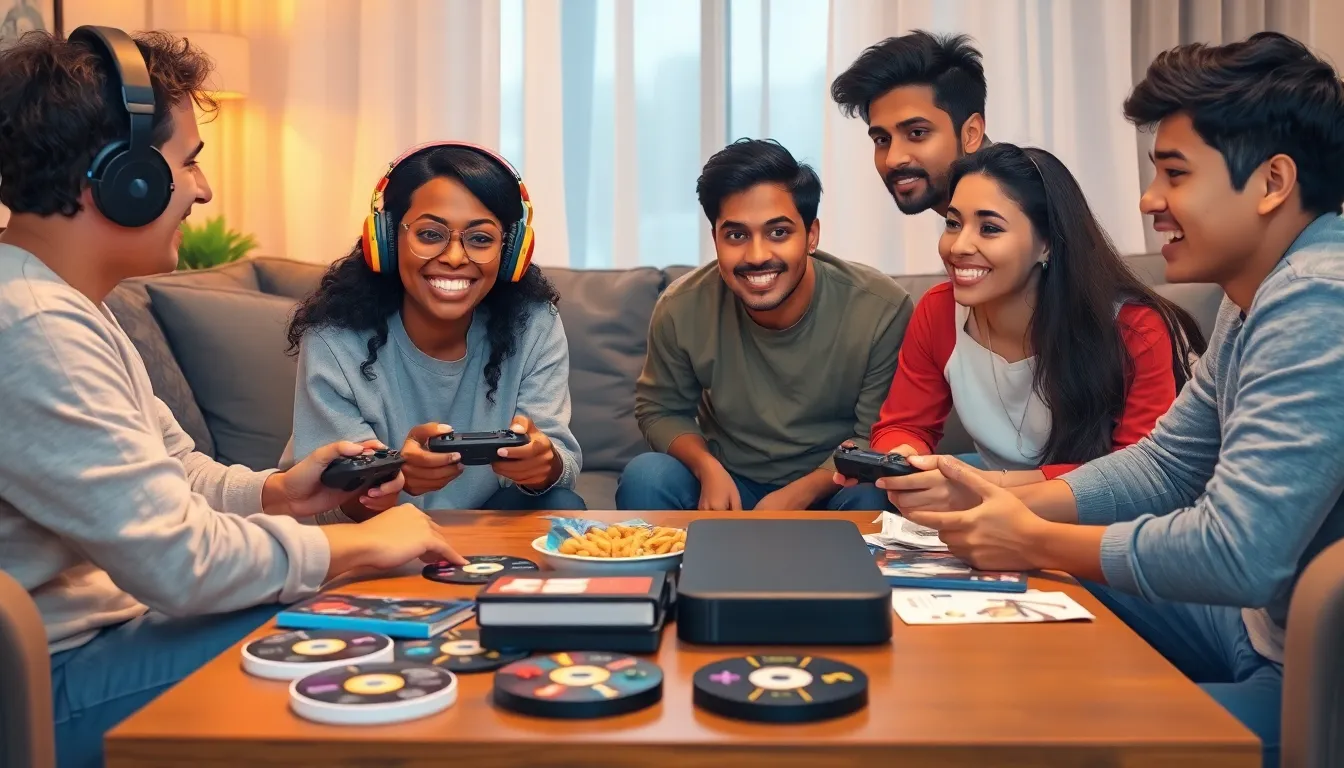In a world where gaming knows no bounds, diverse gaming coverage has emerged as the ultimate cheat code for staying in the loop. Whether players are slaying dragons or building virtual empires, the need for inclusive and varied perspectives is more crucial than ever. After all, no one wants to miss out on the latest indie gem or the next big blockbuster just because it doesn’t fit into a single narrative.
Table of Contents
ToggleUnderstanding Diverse Gaming Coverage
Diverse gaming coverage encompasses various voices and viewpoints within the gaming landscape. Inclusive representation plays a vital role in fostering a rich gaming culture.
Importance of Representation
Representation shapes the gaming experience significantly. When diverse narratives exist, players connect more deeply with content. Games featuring characters from various backgrounds encourage broader engagement. Highlighting stories of underrepresented groups nurtures a sense of belonging in players. When gamers see themselves reflected in the games, it enhances their overall experience.
Impact on Gamers and Communities
Impact extends beyond individual enjoyment. Diverse gaming coverage promotes empathy among players. Varied perspectives foster understanding and respect within communities. Communities thrive when members share unique experiences through inclusive narratives. Gamers benefit from exposure to different ideas and cultures, ultimately enriching their gaming journeys. The collective growth of these communities drives innovation and creativity within the gaming industry.
Types of Diverse Gaming Coverage

Diverse gaming coverage plays a vital role in promoting inclusivity within the gaming community. Several dimensions contribute to its richness.
Gender Representation
Gender representation shapes player experiences. Female characters in games, such as Aloy from Horizon Zero Dawn or Ellie from The Last of Us, engage a wider audience and spur interest. Studies show that women’s involvement in gaming has increased, with nearly 48% of gamers identifying as women. Game developers benefit from creating narratives that reflect gender diversity, allowing them to connect with various players.
Racial and Ethnic Diversity
Racial and ethnic diversity creates more authentic gaming worlds. Characters like Jin Sakai from Ghost of Tsushima and CJ from Grand Theft Auto: San Andreas promote connections to cultural heritage. Reports indicate that games with racial diversity enhance player immersion and appeal, reaching a broader audience. Inclusive storylines resonate more deeply, enabling players from different backgrounds to relate to their experiences.
LGBTQ+ Representation
LGBTQ+ representation enriches narratives in gaming. Titles like The Last of Us Part II and Life is Strange showcase complex characters and story arcs that reflect LGBTQ+ experiences. In recent years, LGBTQ+ characters have gained visibility, appealing to a diverse player base. Engaging multiple identities fosters empathy and understanding, encouraging inclusivity within the gaming community.
Platforms for Diverse Gaming Coverage
Diverse gaming coverage spans various platforms, ensuring players access inclusive perspectives in gaming. Essential components include media outlets and streaming platforms.
Media Outlets
Various media outlets fulfill the need for diverse gaming narratives. Established sites like IGN and Kotaku cover mainstream titles, while platforms like Gamasutra focus on indie games and developer insights. Websites such as Eurogamer highlight European gaming culture, providing varied viewpoints. Gaming journals and podcasts also offer in-depth analyses and interviews, showcasing different voices and experiences. These outlets play a crucial role in representing underrepresented groups, ensuring that all gamers find relatable content and coverage.
Streaming and Content Creation
Streaming platforms like Twitch, YouTube, and Facebook Gaming amplify diverse voices in gaming. Gamers from different backgrounds share gameplay experiences and cultural insights. Personalities such as Pokimane and Valkyrae exemplify female representation in the gaming world, inspiring fellow gamers. Niche communities flourish within these platforms, allowing creators to discuss topics like game design, representation, and community building. Content creators foster engagement and inclusivity, attracting diverse audiences that contribute to the rich gaming culture.
Challenges in Achieving Diverse Gaming Coverage
Diverse gaming coverage faces several significant challenges that hinder its development. Understanding these challenges highlights the importance of addressing them.
Industry Barriers
Industry barriers often stifle diverse representation. Many game developers lack the resources to create inclusive content, resulting in limited viewpoints. Funding disparities can restrict the development of diverse narratives and characters. Additionally, hiring practices in gaming studios frequently favor homogeneity, leading to a lack of diverse perspectives in game design. Established platforms tend to prioritize mainstream titles, which can overshadow innovative indie games that showcase varied experiences. These systemic issues contribute to a gaming landscape where diversity struggles to gain traction.
Audience Perception
Audience perception significantly influences the success of diverse gaming coverage. Some gamers may resist changes in representation, believing it compromises gameplay quality. Misconceptions about minority groups can foster biases that deter engagement with games featuring diverse characters. Furthermore, entrenched stereotypes may lead to negative reactions toward games aimed at broader audiences. This resistance inhibits the growth of diverse narratives and character development. Addressing these perceptions requires education and advocacy to foster a more inclusive gaming community.
Diverse gaming coverage is essential for creating an inclusive and engaging gaming landscape. By embracing a variety of perspectives and voices, the industry can foster deeper connections among players and enhance overall enjoyment. Representation matters not only in character design but also in the narratives that shape gaming experiences.
As the gaming community continues to evolve, it’s crucial to advocate for diverse coverage across all platforms. This commitment to inclusivity will drive innovation and creativity while enriching the gaming culture. By supporting varied narratives and perspectives, players contribute to a more vibrant and empathetic gaming world that reflects the diversity of its audience.




